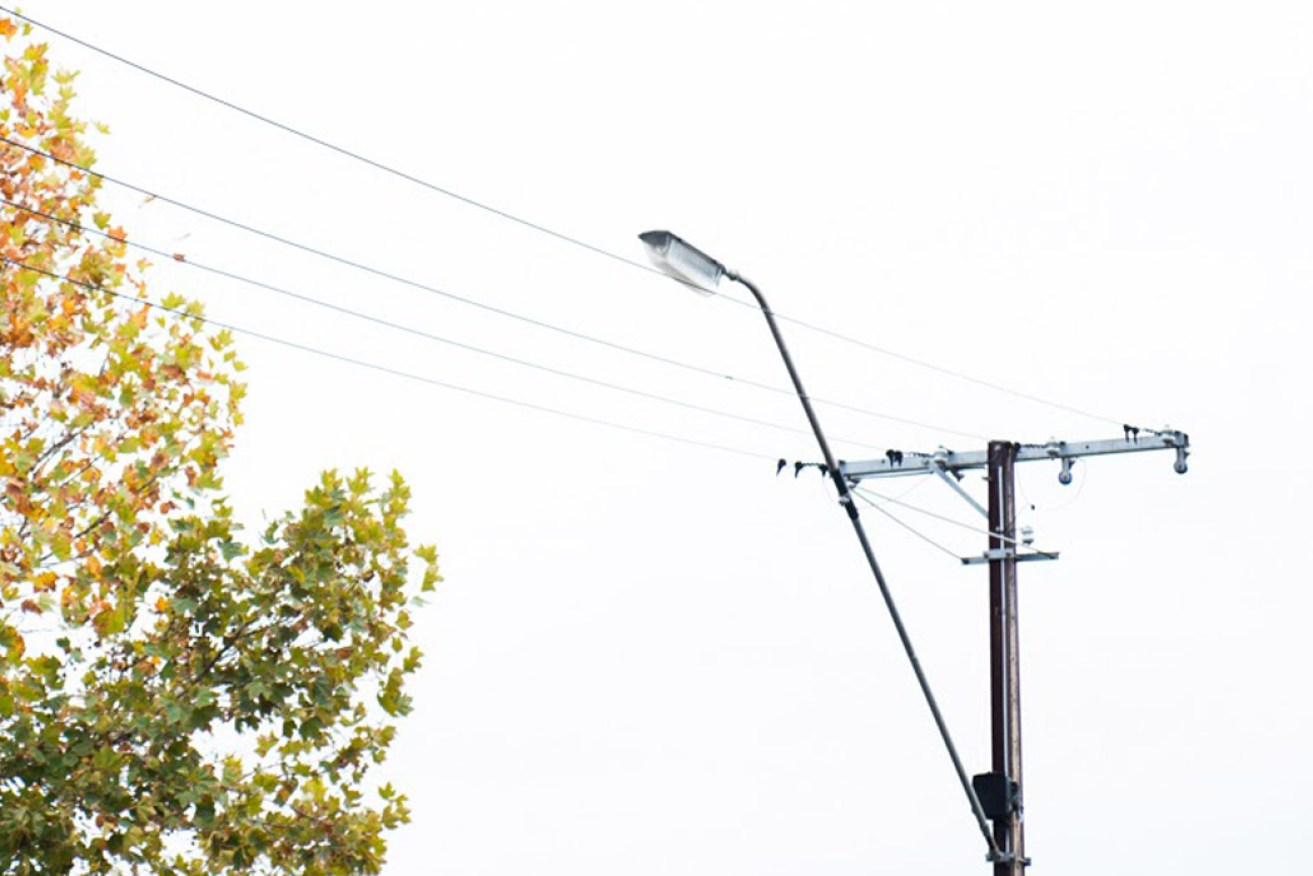SA Power Networks a “questionable corporate citizen”: LGA
The Local Government Association has described SA Power Networks as a “questionable corporate citizen”, accusing it of over-charging and warning councils not to buy into its new deals on efficient LED street lighting.


Photo: Nat Rogers/InDaily
The LGA says it is in a long-running dispute with SA Power Networks about public lighting charges and therefore councils shouldn’t take up new tariffs being offered by the company to switch over to more cost-effective and energy-efficient LED street lights.
LGA chief executive Matt Pinnegar said his association believed SA Power Networks had overcharged local councils by up to $30 million since 2010 and the association will be taking the company to the Australian Energy Regulator if the disagreement isn’t resolved soon.
“Our view is that they’re a questionable corporate citizen,” Pinnegar told InDaily.
“The current monopoly arrangement has failed councils and ratepayers.”
SA Power Networks rejected the LGA’s assertions, saying it did not understand why the LGA continued to dispute its public lighting charges.
The company said a regulatory determination by the Essential Services Commission in 2010, and a subsequent independent expert panel in 2015 co-convened by the LGA, had “confirmed our prices were fair and reasonable and our pricing methodology is appropriate”.
“Our pricing is established under a framework established by the Australian Energy Regulator and SA Power Networks has been transparent in its pricing for street lighting,” said SA Power Networks’ manager of stakeholder relations, Paul Roberts.
“We are more than happy for councils to compare our pricing with that of other potential suppliers and we respect their right to do so. We are already providing a service for councils that delivers the benefits of bulk purchasing of lights and cost efficient provision of lights in our city’s streets.
“We also have extensive experience managing installation and maintenance of street lights on a state-wide basis. We are already able to start working with councils to procure and install next-generation street lights.
“Ultimately, it is a decision for individual councils to decide their approach in this matter.”
Pinnegar, however, said SA Power Networks’ new tariffs to replace old street lights with LEDs did not represent value for money, and it would be prudent for councils to delay taking up the offer.
“We caution council members about entering into agreements with SAPN that are not value for money and that continue the unsatisfactory monopoly arrangements for street lighting.”
Instead, the LGA says it is producing its own business case on the possibility of councils joining together to purchase LED street lights.
Just such an arrangement among a group of eastern suburbs councils has been put on hold, amid a controversy about probity exposed by InDaily over the past week.
Pinnegar wouldn’t comment on the furore over a public lighting tender planned by the Eastern Region Alliance (ERA), other than to say he had been assured the process was being reviewed by an independent consultant.
The Ombudsman is now asking questions about the tender process, which came under the spotlight due to concerns from a multinational lighting company about the involvement of a figure connected with a tendering company in the design of the tender documents.
While this controversy developed last week, SA Power Networks – which runs the state’s electricity infrastructure – entered into the market, publishing new tariffs on LED street lights for councils.
One of its offerings, as reported by InDaily yesterday, is to fund the up-front capital cost and allow councils to pay back the cost over time.
However, the LGA says councils shouldn’t sign up to the deal until it completes its own examination of options for changing over to LEDs, which offer energy savings of up to 70 per cent over conventional globes.
“We are aware SA Power Networks (SAPN) have recently written to SA councils with a proposal to change existing public lighting over to new LED lights as a cost-saving measure,” said Pinnegar.
“We also know from experience that SAPN public lighting costs aren’t necessarily cost-effective for councils.”
He said the LGA was exploring “other business case options” for public lighting to “identify cost and energy efficiencies, including the potential for councils to collectively purchase LEDs”.
“We have advised councils it would be prudent to hold off on entering into any agreement with SAPN in relation to their proposal to transition existing pubic lighting into LED technology until the local government business case has been finalised,” Pinnegar said.
The LGA believes the SA Power Networks deal would over-charge for the service costs of LEDs, which require very little maintenance compared to older globe technology.
SA Power Networks owns and maintains the electricity infrastructure in South Australia. It is majority owned by global infrastructure company Cheung Kong Infrastructure Holdings.
The LGA says councils oversee 203,000 street lights, while the State Government is responsible for 36,000.
Pinnegar says the dispute over charges can be traced back to a change in the regulatory framework governing public lighting services which took effect on 1 July 2010.
Since then, councils and the government have in “protracted negotiations” with SA Power Networks, and have failed to resolve disputes about a range of issues, including the rate of depreciation of public lighting assets, their residual value, and prepayments collected by the company for future replacement of freestanding lighting columns.




